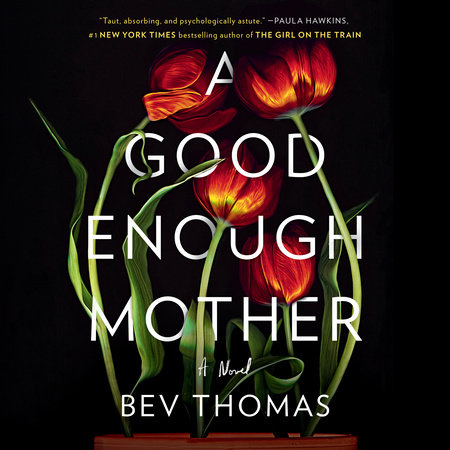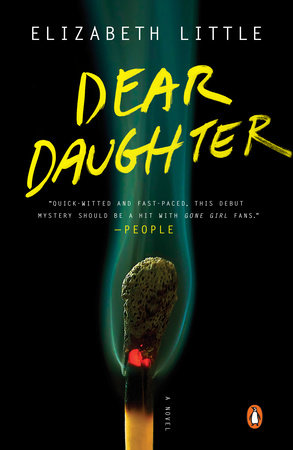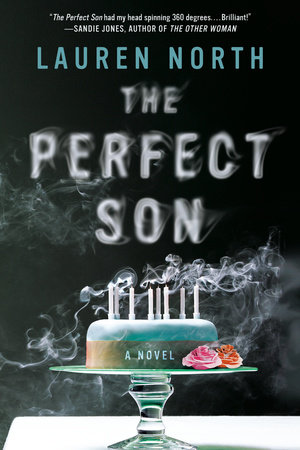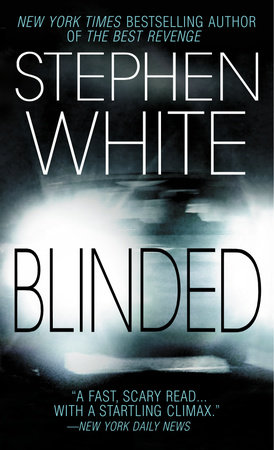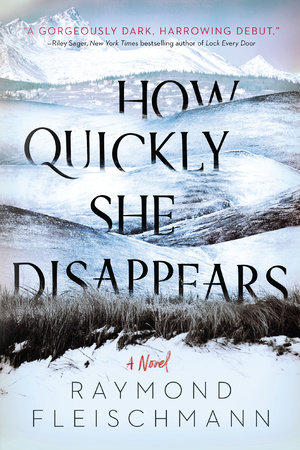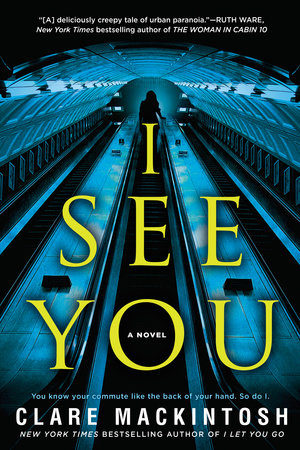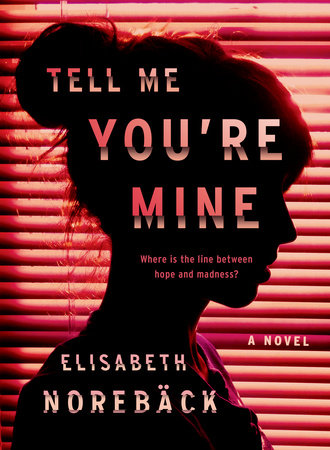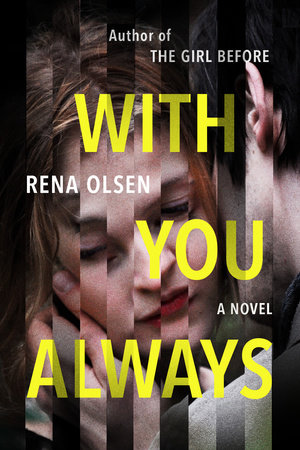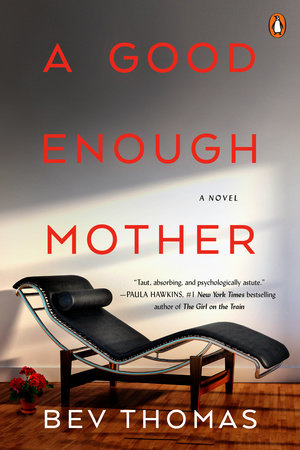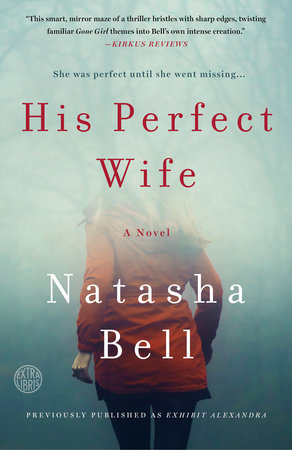Author Q&A
A Conversation with Bev Thomas
The protagonist of A Good Enough Mother is Ruth Hartland, an experienced therapist who specializes in helping trauma victims. You were also a clinical psychologist for many years, and have an in-depth understanding of this world. What made you want to explore the patient-therapist relationship in fiction and how did your real-life experiences inform the novel?
In my work, I had always been very interested in grief and loss—powerful emotions that not only underpin the human condition, but frequently find their way into the therapy room. But I was initially reluctant to explore the therapeutic world in fiction, as I didn’t want the focus to be on a patient. It was only when I flipped the concept and made the protagonist a flawed therapist instead that the story began to emerge. What if a brilliant therapist is blindsided by feelings of grief about her own missing son? What if one of her new patients reminds her of him? And so the story began.
All the detail around the case work is fictionalized, but the world is real. The workings of a National Health Service [NHS] department, the therapy work, and the understanding and treatment of psychological difficulties are very much drawn from my experience of working as a clinical psychologist in the public sector.
How do you feel about the way therapy is typically depicted in popular culture, including books, movies, and television shows? And why do you think people are so consistently fascinated with this subject?
Popular culture often uses therapy as a plot device rather than something to be explored in its own right. Given my background, I was interested in exploring the psychoanalytic model of therapy in fiction. It places emphasis on transference, the relationship between therapist and patient, and the importance of boundaries, and these are the elements that get played out in Ruth’s story.
Therapy is about enabling a person to make sense of his own life story. I think the general fascination with therapy in the media is partly because it’s such a private world: just two people talking in a room. There’s both an intimacy and secrecy to that relationship. In my book, people come to therapy feeling desperate, and hope their lives will change for the better. By opening a window into this world, the reader becomes a fly on the wall, and by seeing it all through Ruth’s point of view, the reader is simultaneously party to, and full of, her anxieties and struggles. People are endlessly fascinated and intrigued about other people’s lives, but I believe it’s more than just curiosity. I think people want to “listen in” to learn about what makes people tick, in order perhaps to apply that learning and wisdom to their own lives.
A Good Enough Mother is also, as the title suggests, about the responsibilities and challenges of motherhood. Why did you choose to ground the novel in Ruth’s role as a mother and in her relationships with her children—and were there particular themes or issues you hoped to explore?
In my clinical work, I became particularly interested in attachment theory and the title is taken from the writings of Donald Winnicott, a British pediatrician and psychoanalyst. It refers to the necessary progressive maternal detachment, so that the child is able to develop appropriate independence. The aim is for something less than perfect, not all encompassing, enabling a child to learn to thrive. In the book, the irony for Ruth is that, despite her best intentions, it is her own difficulties in separating from her son that contribute to his problems.
Attachment and mothering are key themes in the book, reflected in the relationship between Ruth and her mother, Ruth and her son Tom, and also what we come to learn about the relationship between Dan and his mother. We also see how patterns can unintentionally be repeated through the generations. And in making Ruth the mother of twins, I wanted to help the reader to see differences in the way she parents her two children.
The book highlights a general tendency toward “over parenting” and taps into the maternal anxiety of our generation. We are bombarded with messages that encourage perfection and while we of course need to offer love and support to our kids, we also need to know when to stand back and let them find their own way, however painful that might be.
Because of your background, you already had firsthand knowledge of psychological therapy and psychoanalytic theory before beginning this book. But you did do some additional research while writing. Can you talk a little bit about what that process looked like, and what you learned more about?
I did further research into the psychology of trauma. It was something I had encountered in my clinical work, but I was able to deepen my understanding of the psychoanalytic understanding and treatment of trauma. I came to appreciate the difficult and enormously valuable work done by therapists who treat the survivors of awful tragedies. We might read those stories on the front page of the paper, or see them on the evening news, but we don’t always think about how those people go on to live their lives after experiencing such terrible events.
In addition, research into missing persons left me appalled by the statistics of young people and adults who go missing every year. My research focused on the lives of families and loved ones who are left in limbo, a state that has been described as an “ambiguous loss”—a particularly painful psychological experience that is punctuated by hope, uncertainty, and a lack of closure.
From the first introduction of Dan—Ruth’s new patient who bears a striking resemblance to her missing son—it is clear that he is damaged and manipulative. Yet Ruth is drawn to him all the same, and the reader must wait with bated breath to see just how bad things get. How did you go about building suspense, and were you inspired by any other novels or films?
The opening chapter needed to set up the book, revealing simultaneously both the risk and the inevitability of Ruth’s choice to continue seeing this patient. The reader needs to know it’s unwise, but also to understand the pull. In the book, the two parallel stories of Dan and Tom are interwoven, and in each strand, there are questions to which the reader wants answers. It is the slow and steady revelations that build suspense, continuing until the narratives collide and come to a climax at the same time.
Unsurprisingly, I’m drawn to books and film that explore psychological and emotional complexities. One film that gets a mention in the book is Ordinary People, which is an extraordinary film about the aftermath of grief and loss in a family.
In many ways, Ruth represents the archetype of the “wounded healer.” Can you expand on that idea a little further, and what it means in the world of this book?
The “wounded healer” was a term originally created by Carl Jung. It refers to the idea that analysts are compelled to treat patients because they themselves are “wounded.” Many people in the caring professions come to the work because they are interested in it, but also perhaps because they have also had difficult personal experiences. Therapists, just like all people, deal with the complexities of emotional and family life, and this can often add, rather than detract, from their ability to do a good job.
A problem arises if work becomes a way of trying to heal a personal problem. For Ruth, helping and fixing was something that was rooted in her complicated childhood. She was the child of an alcoholic, and after her father left her family, she was the sole caretaker of a mother who was volatile and inconsistent. Undoubtedly, this life experience played a part in her decision to train as a therapist—and probably contributed to her being an extremely good one. Yet it is her more recent, current grief for her missing son that is her undoing. She is “wounded” by this trauma, so at the very time she needs to be pulling back, she sinks in deeper, and Dan becomes a focus of her feelings of grief and despair.
Without giving too much away, A Good Enough Mother culminates in a terrible act of violence. But the book doesn’t end there, and instead shows the characters working through the aftermath—confusion, grief, penance, acceptance. Why was it important to you to examine the effects of trauma and to grapple with the toll that this violence takes on the characters?
There is a multilayered aspect to the book, as I wanted to create mirroring between the emotional experiences of the characters. We see how Ruth’s childhood feeling of suffocation and lack of individuation at the hands of her mother is mirrored in her relationship with her son. We also see how her unresolved trauma regarding the disappearance of Tom draws her inexorably to Dan, as she’s compelled to try to find a way to “fix” him, in a way she has failed to do with Tom. Dan was looking for a mother; she was looking for a son. It was a perfect storm. Interweaving these stories was fundamental to the plot, but I also wanted to make sure the emotional fallout following the tragedy was similarly multilayered. It couldn’t be a clear-cut line of blame and responsibility that would fall at the door of one person—life very rarely works that way. It felt important to show the subsequent emotional unravelling in all its complexity.
What do you hope readers take away from A Good Enough Mother?
First and foremost, it’s a book of fiction, and so I hope they enjoy it and find the narrative thought-provoking. But I also hope readers learn something about the model of therapy, and see the value in acknowledging and experiencing feelings. While Ruth thinks she is in control of her world, she is in denial about the strength of her grief and these suppressed feelings seep out. It’s this that has devastating consequences for her and others.
I’ve worked in the NHS for many years, and currently work with staff teams in mental health services. The system is stretched and under-resourced and referrals are increasing. I wanted to highlight this pressure in the book. In one chapter, when Ruth works with a traumatized staff team, we see firsthand the tragic impact of the unavailability of in-patient beds for a desperately unwell patient. Mental health services are underfunded and the patients are often disenfranchised and without voice and power to demand better treatment. One in four people will be affected by a mental health problem in their lives, regardless of culture and social class, so this is an issue for us all. In particular, the focus on adolescent mental health issues draws attention to our responsibility for the youngest and most vulnerable in our society.
